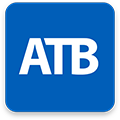New business owners might find financial management overwhelming, but the right tools and planning can make it easier.
Find the right tool
QuickBooks is the gold standard accounting software—it’s what most accountants use. Although it has a subscription fee, QuickBooks provides an efficient, user-friendly and scalable experience for business owners—featuring invoicing templates and receipt uploading and categorization.
There are also free and low-cost software options, like Wave, Xero and Square, each with their own benefits (and offering additional features with paid subscription). If you use free software, explore its capabilities so you know what to expect as your business grows.
There are more options, so consult with your accountant or bookkeeper about software. Ideally, it should have the ability to: track expenses; complete invoicing, payroll, GST calculation and transaction reconciliation; and generate statements for your profit and loss, cash flow and balance sheet. Optional features include inventory management and tax preparation.
Best way to manage finances
Consider picking a cloud-based system to manage your finances. Spreadsheets are a challenge because tools like Microsoft Excel and Google Sheets are not scalable. It is best to use accounting software that communicates with your bank.
How to stick to your budget
From the start, track expenses and keep accurate records. Include an emergency account for unexpected costs in your budget—it’s important for startups to have a plan in place.
Use a cash flow forecast (your projection of what will happen in the next few years broken down by month). It includes columns for startup costs (what you spent before starting), revenue (what you expect to sell based on your market research), Cost of Goods Sold (COGS: direct costs of producing your products) and fixed expenses (like your lease and insurance).
Consider seasonality—are products more expensive or in demand at different times of year? The forecast will calculate your total projected revenue, expenses and profit for the year, and more importantly, show if you profited or lost money each month.
You can also use the cash flow forecast to play with ideas. For example, if you hire a part-time employee in March for $2,000 a month, how will that affect you for the next two years?
Budgeting is about tracking the past, adjusting the forecast, and constantly evolving the projections, which will eventually become more accurate based on months gone by. If you do this re-evaluation exercise every month, you build diligence and accountability into your routine.
Pay yourself sooner, not later
A lot of entrepreneurs pay themselves last—or not at all. The solution is to build yourself in as one of the first expenses for your business. The dollar amount might start small, but pay yourself something and let that number grow with your company.
This will also make you think strategically about your expenses. If you pay yourself last, you might be paying expenses that don’t need to be a priority. If you pay yourself sooner, you’ll get honest about what is necessary to run your business.
Revenue and expenses
Ideas to consider when budgeting:
- Evaluate revenue: Are you getting as much revenue as possible? Can you make more sales? Can you sell more to repeat customers? Look at your accounts receivable. Are people paying you immediately or later? Could you make the payment process easier or offer incentives for quick payments?
- Streamline expenses: How can you reduce and slow expenses? For example, can you ask a supplier to allow you 90 days to pay? Could you use a credit card?
If you can increase and accelerate the amount of money coming in while slowing and reducing the money going out, you’ll increase your cash flow and ultimately increase your financial wellness.
Conclusion: Stay on track
Keep accurate financial records, use a cash flow forecast and adjust projections accordingly. Use accounting software that allows you to upload receipts and reconcile with your bank; free systems exist, but paid subscriptions are worth it for the features. Put paying yourself closer to the top of your priority list. Find where you can maximize revenue and reduce costs.
